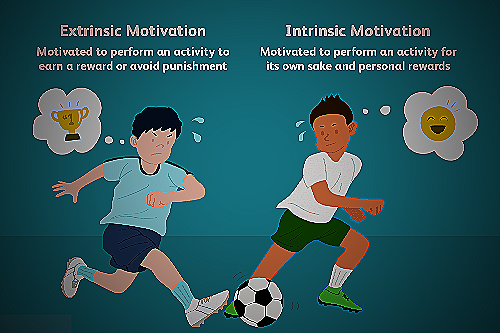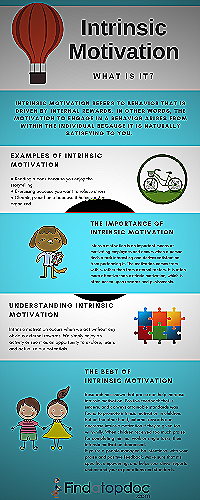Extrinsic Motivation Examples: Boost Your Team’s Productivity!
Definition of Extrinsic Motivation
Extrinsic motivation is a type of motivation in which external factors, such as rewards or punishment, are used to stimulate desired behaviors and outcomes. Examples of extrinsic motivation include salary raises, promotions, bonuses, and recognition.
This type of motivation is often used in the workplace to increase productivity and achieve company goals.
Examples of Extrinsic Motivation in the Workplace
Some common examples of extrinsic motivation in the workplace include:
- Bonuses for meeting or exceeding performance targets
- Promotions and career advancement opportunities
- Employee recognition programs, such as “Employee of the Month”
- Salary raises and pay increment schemes
- Stock options and other financial incentives tied to company performance
Possible drawbacks of external drive.
While extrinsic motivation can be effective in driving desired behaviors and outcomes, it also has several inherent pitfalls that should be considered:
Are you struggling to find the motivation to work? Check out this Youtube video to understand the difference between intrinsic and extrinsic motivation examples and how they can affect your work performance.
Discover how to use these motivation types to improve your productivity and job satisfaction. Watch “Intrinsic vs. Extrinsic Motivation Explained – YouTube” now!
What Is Extrinsic Motivation?
Extrinsic motivation refers to the act of doing something only for the sake of earning an external reward or avoiding a negative consequence. Examples of extrinsic motivation include receiving a promotion at work, avoiding a demotion, or earning a bonus.
Extrinsic motivation is different from intrinsic motivation, which comes from within an individual and is driven by personal satisfaction and enjoyment. An example of intrinsic motivation is learning a new skill simply because the individual finds it personally fulfilling and satisfying.
One important thing to note about extrinsic motivation is that while it can lead to increased productivity and goal accomplishment, it may not always lead to long-term commitment and satisfaction. In some cases, when the external reward is no longer present, the individual may lose interest in the task or goal at hand.
Therefore, it is important for organisations to find ways to incorporate both intrinsic and extrinsic motivation in the workplace in order to maintain a motivated workforce.

Extrinsic motivation can also come in the form of punishment or negative consequences. For instance, an employee may work harder in order to avoid demotion or termination.
Similarly, a student may study for an exam to avoid getting a poor grade, rather than because of personal interest in the subject matter. While extrinsic motivation can be effective in the short-term, reliance on it alone can lead to a lack of satisfaction and engagement in the long term.
Examples of Extrinsic Motivation
Extrinsic motivation can be seen in various contexts such as in the workplace, education, and parenting. Examples of extrinsic motivation in the workplace include bonus incentives, promotions, or salary increases.
For instance, a sales representative may be motivated to make more sales to get a bonus or a promotion. However, the employee may lose motivation if he doesn’t achieve those goals.
In education, extrinsic motivation can be seen in grades, scholarships, and recognition. Students can work harder while in school to earn high grades and awards, which can later lead to scholarships and job opportunities.
Extrinsic motivation can also be observed in parenting. For example, children can be promised a treat if they finish their homework or a specific task.
Rewards such as toys, candies, or video games can motivate children to behave well or follow rules.
However, too much extrinsic motivation can have negative effects in the long run. According to research, extrinsic motivation can decrease intrinsic motivation.
Employees may lose interest in their job if they constantly rely on external rewards. Students may focus more on grades instead of learning and enjoying the process of gaining knowledge.

Impact of Extrinsic Motivation
Extrinsic motivation is an external force that drives an individual towards performing a task in order to gain a reward or avoid a punishment. This type of motivation has both positive and negative effects on employee productivity and team performance.
Positive Effects of Extrinsic Motivation
Extrinsic motivation can effectively increase an employee’s productivity and performance. When an employee is rewarded for a job well done, it reinforces the behavior and makes them more likely to continue that level of performance.
For example, a salesperson who is offered a bonus for achieving a certain target is likely to work harder towards achieving that goal. Similarly, an employee who is offered a promotion for achieving certain targets is likely to perform at a higher level.
In addition, extrinsic motivation can also lead to a better job satisfaction, especially if the rewards provided are meaningful and valuable to the employee. For instance, an employee who is offered a paid vacation for achieving their target will experience a positive feeling and are likely to feel more valued and motivated to continue performing.
Negative Effects of Extrinsic Motivation
While extrinsic motivation can have positive effects, it can also lead to negative effects on employee productivity and team performance. One of the negative effects is that employees may feel that the reward is not worth the effort required to achieve it.
For instance, when a company offers a bonus that is too small in relation to the effort required to achieve it, employees may lose motivation and not put in the required effort.
Another negative effect of extrinsic motivation is that it can lead to employees focusing only on the reward, leading to a decrease in enjoyment or intrinsic satisfaction from the job. This can lead to a decrease in employee engagement, resulting in lower productivity levels and may even lead to an increased turnover rate.

How to Use Extrinsic Motivation
Extrinsic motivation can be a powerful tool for driving behavior in the workplace, in education, and in parenting. By providing external rewards or incentives, managers, teachers, and parents can encourage their employees, students, or children to complete tasks and achieve desired outcomes.
However, using extrinsic motivation effectively requires careful consideration and planning. Here are some tips for how to use extrinsic motivation:
1. Set specific, achievable goals
In order for extrinsic motivation to be effective, the rewards or incentives that are offered need to be tied to specific, achievable goals. This helps to ensure that the behavior being rewarded is directly relevant to the desired outcome.
For example, in the workplace, a sales team might be incentivized to hit a certain revenue target, while in a classroom, students might be rewarded for completing a certain amount of reading.
2. Offer a range of rewards
Not all individuals are motivated by the same things. Some may be motivated by money, while others may prefer public recognition or time off.
It’s important to offer a range of rewards to accommodate different preferences. Additionally, it’s important to make the rewards appealing but also attainable.
Offering rewards that are too difficult to achieve may actually demotivate individuals who feel that the rewards are out of reach.
3. Use rewards strategically
Rewards should be used strategically and judiciously. Over-reliance on extrinsic motivation can lead to a “what’s in it for me?” attitude that detracts from other important drivers of behavior such as intrinsic motivation and personal satisfaction.
Additionally, rewards should not be seen as a substitute for a positive organizational culture or good relationships between managers and employees or teachers and students.
4. Provide feedback and encouragement
Providing feedback and encouragement can help to reinforce the desired behaviors and increase motivation. This feedback should be timely, specific, and meaningful, highlighting both successes and areas for improvement.
5. Address potential challenges
While extrinsic motivation can be effective, it’s important to address potential challenges that may arise. These may include situations where rewards are withdrawn or where the rewards are seen as unfair or arbitrary.
Additionally, care should be taken to ensure that rewards do not conflict with other important values or goals.
By using extrinsic motivation effectively, managers, teachers, and parents can encourage desired behaviors and outcomes in their employees, students, and children. By offering a range of rewards, using rewards strategically, providing feedback and encouragement, addressing potential challenges, and more, extrinsic motivation can be a powerful tool for achieving goals and driving behavior.
Potential Pitfalls of Extrinsic Motivation
While extrinsic motivation can be a powerful way to incentivize employees and achieve desired outcomes, it is important to be aware of the potential pitfalls that can arise by relying too much on external rewards. One major issue is that extrinsic motivation can lead to a decrease in intrinsic motivation, which is the internal desire to engage in an activity because it is personally fulfilling.
When employees focus solely on earning rewards, they may lose sight of the enjoyment and satisfaction they could have gained from the task itself.
Another downside to extrinsic motivation is that it can stifle creativity. When employees are too focused on earning rewards, they may be less willing to take risks and try new approaches that could lead to innovation.
Additionally, extrinsic rewards can create a narrow focus, preventing employees from seeing other possibilities and hindering their ability to think outside the box.
It is essential to balance extrinsic and intrinsic motivation to achieve optimal performance and engagement from employees.
Extrinsic Motivation and Employee Engagement
Extrinsic motivation is an external form of motivation that is driven by external rewards, such as promotions, bonuses, and recognition. It is important for companies to understand the connection between extrinsic motivation and employee engagement as it can lead to increased productivity and a motivated workplace.
According to research, the effect of extrinsic motivation on employees’ work productivity is more dominant or higher compared to intrinsic motivation. This is because extrinsic motivation often involves rewards that are tangible, such as money or grades, that can drive employees to work harder to achieve these goals.
However, it is important to note that relying too heavily on extrinsic motivation can also have its downsides. When employees become preoccupied with rewards, they may narrow their focus and reduce their ability to see other possibilities, hindering creativity.
Additionally, extrinsic rewards may not always provide informative feedback or enable employees to focus on personal growth and development.
One example of extrinsic motivation in the workplace is a sales commission. Sales representatives may be more motivated to make sales and reach their targets in order to earn a higher commission.
Another example is a promotion or bonus for meeting certain performance metrics. These rewards can drive employees to work harder and become more engaged in their work.
Conclusion
Extrinsic motivation is an external drive that can push individuals to complete tasks and achieve objectives that may have otherwise been overlooked. While it may not be as powerful as intrinsic motivation, it can be an effective tool for organizations to motivate individuals to attain their professional goals.
Examples of extrinsic motivation include bonuses, raises, promotions, and recognition. In conclusion, by understanding extrinsic motivation examples and how they can be implemented effectively, organizations can create a motivated workforce that can drive their success.

